Inspired by Calculus: Tuesday math circle, week 2
These are notes about a Math Circle we run in Apex, NC. The main goal of this meeting was to explore the idea of limits. But the term “limit” is yet to come up! It’s a deep idea that has to grow slowly enough. In time, I’d like students to be able to:
- Make their own examples of infinite sequences and series
- Make up sequences that have finite limits and series with finite sums
- Use their own examples and words to explain that it takes infinitesimally small pieces for infinity of the pieces to add up to a finite sum
- Draw or make models of repeating decimals (or repeating positional expansions in systems in other bases) as limits, for example, that .9999…=1
Here are our activities, the whys behind them, and things to try at home. Here are all the photos.
- What math do you see in what you love? This combination of a scavenger hunt and a show-and-tell brings home the message that interesting math is everywhere. We searched for math in the “Dungeons and Dragons” book Stephen brought (stats, character progression), and in a woven bracelet Asiyah wore (patterns, infinity). At home: seek interesting math in what you love.
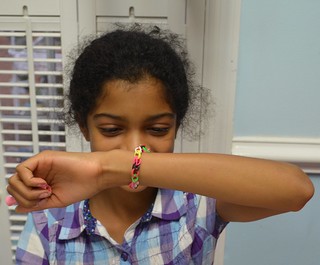
- Hotel Infinity story and finite space. The math motivation is to approach limits. Telling stories together is a friendship-building activity. Classic math stories, such as Hotel Infinity, ground advanced ideas in everyday objects – with some sci-fi, playful twists.
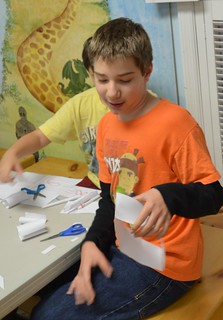
Math is about creating new worlds, so fairy tales and science fiction are very appropriate. At home: read or tell other math stories, such as “The wise man, the king, and the chessboard,” or read the rest of the classic “Hotel Infinity.” I wanted to use the hotel model to ask the question about limits: “Can you make the hotel not take infinite space?” The answer involves deep concepts. I just developed the activity. It was the first time I did the activity with a group, so it was comparatively slow to start, and some kids could not understand my explanation of the task. Next time, I will focus more on modeling the hotel with paper or clay, “to capture infinity in your hand.” Can you build the hotel, here and now? It usually takes two or three tries, at the very least, for a new activity to run to my satisfaction. An interesting question in pedagogy: don’t kids benefit more when they see you doing something for the first time? Some studies say so. It is hard to test new experimental curricula reliably, because volunteer teachers who use a curriculum for the first time are so excited that student learning is through the roof. The same curriculum sometimes becomes less efficient once the teacher learns it well. I like to have a combination of old and new activities, because they have different benefits. - Zombie binary tree. This was our move-around activity for the day. We built a binary tree out of ourselves, pretending to be zombies, because the hands were stretched out front.

Binary tree is a type of a fractal, and a nice photo-op for large groups. At home: show math ideas with your whole body(s) for great photos and videos! Next time, I think I will add a story about the zombie epidemic, with the first zombie infecting the next two, each of them infecting two more and so on.
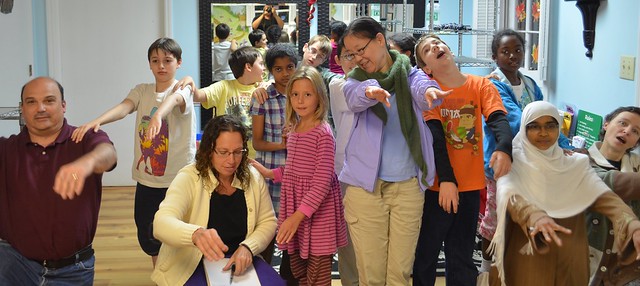
- Make a square out of paper. Do you measure it out, estimate by eye, or use the diagonal trick? All Maker tasks are full of decisions and problem-solving! Every kid did things differently. At home: invite kids to figure out their own ways to make something, from light saber-shaped pancakes to furniture-and-sheets forts.

- Half of a half of a half. This is another take on limits: a particular example of an infinite series of shapes that takes up finite space. We used our squares. If you cut the square in half, then add half of (the other) half, add half of a half of a half, and so on… What number do you get as your sum?

Maxime came up with a clever way of cutting out corners to show the boundaries better.
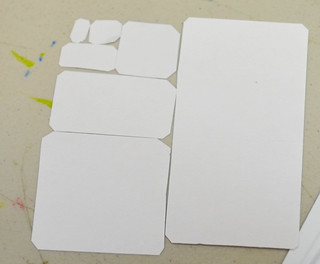
The question was hard to express, and the answers varied. You get the whole square! And what number is it? You get infinity pieces. You get one… It was a rich discussion. We will continue next time. At home: cut things into pieces… repeatedly!


- Infinity elephants movie. This is Vi Hart’s artistic take on limits. At home: watch this again, discuss it, watch other Vi Hart’s movies. http://www.youtube.com/watch?v=DK5Z709J2eo
This week, we started quests for parents:
- Just do it. Complete all our activities at your own challenge level. How does it feel? Record your thoughts.
- Tinker, adapt, redesign. For every activity, come up with at least one change. Record your ideas.
- He said, she said. Catch interesting things people say and do. Record what you catch.
Here are the notes from Salima and Kristin (click for full size). Next time, I will provide the list of names with this quest.
Why capture what participants say? An example from the notes – Chris says: “”The size of cut paper will never reach zero, because you can’t split atoms!” This is a representation of a recurring topic of mathematician and engineer takes on math. Chris later asked (paraphrased) if we need to think like mathematicians, imagining the infinite number of pieces in our heads, or like engineers, who know the sequence will stop once pieces get small enough. When we write up this set of materials, the description of this theme will be richer with student quotes.
Another reason to take notes: catching more brilliant ideas. There is a lot going on, so I always miss some beauty. For example, Elena explains the difference between squares and square prisms (after Calvin brings our square-making task into space): “Prisms are hollow inside.” Stephen adds they don’t have to be hollow. Kristin captured that in her notes, and Salima wrote in hers: “It is three-dimensional” – and I remember that Kaiya said that, and then we put “3D” she wrote on a card on the terms board. Only now, reading the notes, I realize that Elena probably used “hollow inside” to point out the third dimension – that prisms have some space inside of them! And then two other kids helped with the terminology and precision. The three of children followed three big math values: exploration, precision, and taxonomic categorization of objects. This process parallels how mathematicians work. At first, you come up with the general idea and your own way to talk about it. As you start talking, your idea and your terminology improve. Yes, we need some space inside a prism, but it does not have to be hollow. Can we say, in general, that it needs to be three-dimensional? I would have missed this beautiful example of math collaboration without the notes. The kids would still benefit, but we need to describe our process for other Math Circle leaders and especially people learning to be leaders.
Kim and Christina took “Just do it” for their quest. I loved to peek into their little adult Circle, with ideas such as infinitely-dimensional space, or time travel, just flying around. There are several networks out there running Math Circles of some sort for grown-ups, notably Martin Gardner’s Celebration of the Mind and Teacher Circles. Why do it? First, doing a Circle for yourself is a joyful experience – a serious game, some meaningful entertainment. Second, doing it helps parents and teachers be more engaged, engaging, and knowledgeable as fellow travelers in their children’s learning journeys. Third, fun with math is therapeutic for people with math anxiety.
Bill was tinkering with activity designs.
Hotel Infinity: add visual aid for rooms and aliens. – This may help to engage children who don’t like to just listen to stories. The danger is “runaway imagery” where kids may remember the aliens, but not the math ideas. This is still worth doing if kids disengage.
When asking for students to draw infinity, take suggestions from kids and draw for them on a large piece of paper, if students have difficulty drawing or initiating dialogue. I will definitely try it this Thursday and especially Friday (with kids 4-6). With a white board, kids can change my imperfect implementations of their stories, as well. I love this idea.
Thanks to all participants for the adventure! See you next week!
Related Posts
Posted in Grow

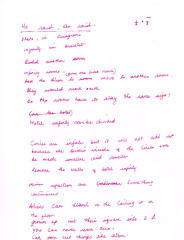

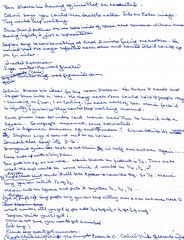






Leave a Reply